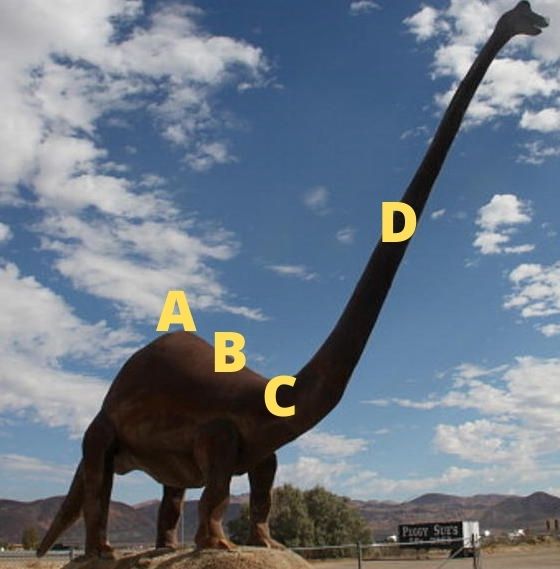This is a brontosaurus:

But let me give you the back story:
Yesterday I saw a question from a struggling copywriter. He says he’s put in the time and effort. But he’s not getting the reward.
He’s not swamped with client work… he’s disappointed by the money he’s making… and he’s not even hearing a kind word or two about a job well done.
This brought to mind a presentation I saw once by billion-dollar copywriter Mike Palmer.
Mike works at Stansberry Research, an Agora imprint. He wrote The End of America VSL, which brought in many millions of simoleons for Stansberry.
So Mike gave this presentation called The Secret Psychology of Becoming a Great Copywriter. The upshot is, there will be times when you feel you suck.
Mike drew a graph to illustrate the natural changes in skill/suck levels. It’s pretty much the brontosaurus up top:

Point A is when you get started, full of optimism.
Point B is when you realize it will be harder than you thought.
Point C is the moment of crisis and despair. At this point many people give up.
(I just want to say I am all for giving up. There’s no shame in it if you ask me, and I suspect most people who champion blind perseverance haven’t tried to do much in life. I’ve given up often, and with very few exceptions, I’ve never looked back.)
But if for some reason you don’t give up, then you eventually move to point D. That’s where you improve and rise above your previous level.
This is not a one-time thing, by the way.
It’s happened to me over and over since I started writing copy for money.
For example, last year around this time, I thought I was pretty good at this whole thing. I then joined Dan Ferrari’s coaching group. After getting some feedback from Dan, I realized I still had big things to work on.
A month or two later, deep into a project, the feedback kept pouring in and getting more significant. I thought “Jesus, why do I need this? I’m obviously not meant to write sales copy.”
But I stuck around, finished the project, became better at the craft, and eventually got my rewards.
Like I said, this has happened to me over and over. I expect it will happen again.
Perhaps if you know this, it will make it easier to progress to point D once you hit that hollow, right at the bottom of the brontosaurus’s neck.
Or perhaps not. Perhaps you’ll look up, squint… well, let me stop there.
When I wrote this article and sent it out to my email newsletter subscribers, I ended on a personal note, about giving up. But I limit those things on this public blog. In case you want to get on my email newsletter, where I don’t hold anything back, click here to subscribe.
